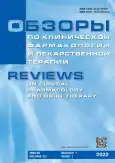A promising method for the diagnosis of preclinical hypoxic state
- Authors: Lyubimov A.V.1, Khokhlov P.P.1, Bychkov E.R.1, Shabanov P.D.1
-
Affiliations:
- Institute of Experimental Medicine
- Issue: Vol 20, No 1 (2022)
- Pages: 67-74
- Section: Original study articles
- Submitted: 27.05.2022
- Accepted: 27.05.2022
- Published: 27.05.2022
- URL: https://journals.eco-vector.com/RCF/article/view/108287
- DOI: https://doi.org/10.17816/RCF20167-74
- ID: 108287
Cite item
Abstract
BACKGROUND: The state of hypoxia in natural conditions occurs in certain cases and is considered as a negative process in the overwhelming majority of cases. However, exogenous hypoxia is used as a factor of adaptation / preconditioning and training to the forthcoming hypoxic stress under some conditions, as well as increasing physical endurance and working capacity in normoxic conditions among specialists of various profiles. The mechanisms of adaptation to exogenous hypoxia have been studied in detail. Earlier in our studies, the value of artificial exogenous normobaric hypoxic hypoxia, which does not have a negative effect on the human body, was determined.
AIM: The aim of this work was to determine hypoxia inducible factor 1α (HIF-1α) as a possible marker of adaptation to normobaric hypoxic hypoxia.
MATERIALS AND METHODS: For 100 days, 6 test volunteers were continuously in a sealed residential test room based on the test bench of ASM JSC (St. Petersburg) in a state of normobaric hypoxic hypoxia (oxygen content 12–20%).
RESULTS: No clinically significant erythrocyte response to long-term exposure to normobaric hypoxic respiratory mixture was expectedly detected, although statistically significant fluctuations in the level of hemoglobin and the absolute number of erythrocytes were determined. When analyzing the HIF-1α concentration, qualitative data were obtained, characterizing a significant response (p < 0.05) in the change in HIF-1α concentration during the observation period. Additionally, a Kendall consistency factor of 0.68 was calculated, suggesting a significant difference in HIF-1α concentration dynamics.
CONCLUSIONS: The chosen mode of hypoxia can be used as a method of exogenous preconditioning.
Full Text
About the authors
Andrey V. Lyubimov
Institute of Experimental Medicine
Author for correspondence.
Email: lyubimov_av@mail.ru
ORCID iD: 0000-0001-9829-4681
SPIN-code: 5307-4186
Cand. Sci. Med. (Pharmacology), Scientific Researcher
Russian Federation, Saint PetersburgPlaton P. Khokhlov
Institute of Experimental Medicine
Email: platonkh@list.ru
ORCID iD: 0000-0001-6553-9267
SPIN-code: 8673-7417
Cand. Sci. (Biochemistry), Senior Scientific Researcher
Russian Federation, Saint PetersburgEugeny R. Bychkov
Institute of Experimental Medicine
Email: bychkov@mail.ru
ORCID iD: 0000-0002-8911-6805
SPIN-code: 9408-0799
Cand. Sci. Med. (Pathophysiology), Head of the Lab
Russian Federation, Saint PetersburgPetr D. Shabanov
Institute of Experimental Medicine
Email: pdshabanov@mail.ru
ORCID iD: 0000-0003-1464-1127
SPIN-code: 8974-7477
Dr. Sci. Med. (Pharmacology), Professor and Head of the Department
Russian Federation, Saint PetersburgReferences
- Zarubina IV, Shabanov PD. From the S.P. Botkin’s idea of “preexposure” to preconditioning phenomenon. Perspectives for use of phenomena of ischemic and pharmacological preconditioning. Reviews on Clinical Pharmacology and Drug Therapy. 2016;14(1): 4–28. (In Russ.) doi: 10.17816/RCF1414–28
- Zarubina IV, Nurmanbetova FN, Shabanov PD. Antigipoksanty pri cherepno-mozgovoi travme. Saint Petersburg: Elbi-SPb; 2006. 207 p. (In Russ.)
- Incsinger F. The metabolic changes in the myocardium during ischemia. Folia pharmacol. 1983;6:63–71.
- Wiesener MS, Jurgensen JS, Rosenberger C, et al. Widespread hypoxia-inducible expression of HIF-2α in distinct cell populations of different organs. FASEB J. 2003;17(2):271–273. doi: 10.1096/fj.02-0445fje
- Flamme I, Frohlich T, von Reutern M, et al. HRF, a putative basic helix-loop-helix-PAS-domain transcription factor, is closely related to hypoxia-inducible factor-1α and developmentally expressed in blood vessels. Mech Dev. 1997;63(1):51–60. doi: 10.1016/s0925-4773(97)00674-6
- Hampton-Smith RJ, Peet DJ. From polyps to people: a highly familiar response to hypoxia. Ann NY Acad Sci. 2009;1177:19–29. doi: 10.1111/j.1749-6632.2009.05035.x
- Еma M, Taya S, Yokotani N, et al. A novel bHLH-PAS factor with close sequence similarity to hypoxia-inducible factor 1α regulates the VEGF expression and is potentially involved in lung and vascular development. Proc Natl Acad Sci USA. 1997;94(9):4273–4278. doi: 10.1073/pnas.94.9.4273
- Tian H, McKnight SL, Russell DW. Endothelial PAS domain protein 1 (EPAS1), a transcription factor selectively expressed in endothelial cells. Genes Dev. 1997;11(1):72–82. doi: 10.1101/gad.11.1.72
- Lyubimov AV, Ivanov AO, Bezkishkij EhN, et al. Assessment of the effect of long-term continuous stay in the artificial hypoxic gas-air environment at normal atmospheric pressure on the functional state of the cardiovascular system. Reviews on Clinical Pharmacology and Drug Therapy. 2018;16(3):47–53. (In Russ.) doi: 10.17816/RCF16347-53
- Jiang BH, Semenza GL, Bauer C, et al. Hypoxia-inducible factor 1 levels vary exponentially over a physiologically relevant range of O2 tension. Am J Physiol Cell Physiol 1996;271(4 Pt. 1):C1172–C1180. doi: 10.1152/ajpcell.1996.271.4.C1172
- Wang GL, Semenza GL. Purification and characterization of hypoxia-inducible factor 1. J Biol Chem. 1995;270(3):1230–1237. doi: 10.1074/jbc.270.3.1230
- Lee G, Choi S, Kim K, et al. Association of hemoglobin concentration and its change with cardiovascular and all-cause mortality. J Am Heart Assoc. 2018;7(3): e007723. doi: 10.1161/JAHA.117.007723
- Smith M, Arthur D, Camitta B, et al. Uniform approach to risk classification and treatment assignment for children with acute lymphoblastic leukemia. J Clin Oncol. 1996;14(1):18–24. doi: 10.1200/JCO.1996.14.1.18
- Horne BD, Anderson JL, John JM, et al. Which white blood cell subtypes predict increased cardiovascular risk? J Am Coll Cardiol. 2005;45(10):1638–1643. doi: 10.1016/j.jacc.2005.02.054
- Ensrud K, Grimm RH Jr. The white blood cell count and risk for coronary heart disease. Am Heart J. 1992;124(1):207–213. doi: 10.1016/0002-8703(92)90942-O








